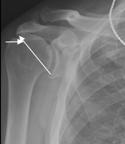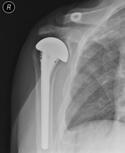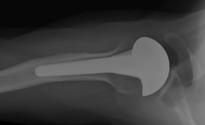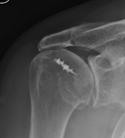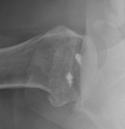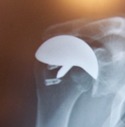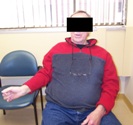Irreparable cuff tears may not mean, de facto, that a patient has no function, or for that matter, pain. In the last video below (which shows the function that this patient enjoys), excellent overhead motion exists, and the pic reveals good external rotation. The reason for this is an adequate 'force couple." As a minimum to "hold the humeral head stably against the glenoid" the teres minor must be in tact in the back, and the subscapularis in the front.


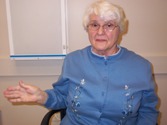
When cuff tear arthropathy is painful, however, the treatment can be with a reverse arthroplasty design or a hemiarthroplasty with an extended articular surface---to resurface the worn humeral cartilage which articulates with the glenoid, as well as the superior portion that now rests beneath the acromion. Resurfacing implants are a valid alternative to stemmed implants; frankly---if bone stock is sufficient to allow fixation, there is no compelling reason to use a stemmed CTA implant any longer. The pics below illustrate the two options. The most important consideration in terms of decision-making rests on whether to perform a reverse or a hemiarthroplasty. Fundamentally, a hemi will not improve preoperative range of motion substantially.
The two videos below on patient AR demonstrate pre- and postoperative function, and make this point---which has now been clearly emphasized in the literature. If one does not have acceptable over the horizon (above 90 degrees) motion, then a reverse is more advisable.
That having been said, both the video of WF after a resufacing, and the video at 1 year after a stemmed hemi show the acceptable function that may be expected after these devices when treating cuff tear arthropathy so long as preoperative range is adequate. If it is, and a patient is younger and/or high demand, a hemi is a good option-- which does not burn the bridge of revision to a reverse implant in the future. When a resurfacing design is used, as opposed to a stemmed hemi---revision of the humeral side is very reliable since one does not have to contend with removing a well fixed stem.
